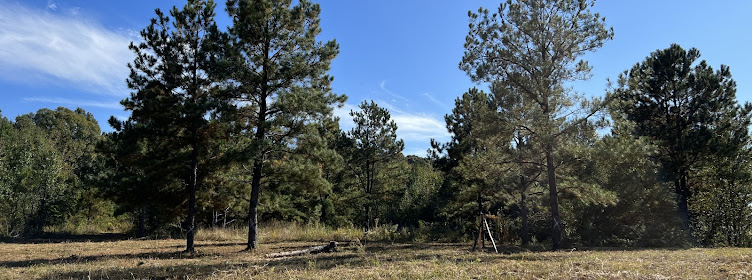Well once again, my Winchester 94 in .30-30 is the victim of the chronic disease of "I can't leave well enough alone" syndrome as I have made some changes. This is part 3 of this series. If you haven't read Part 1 and Part 2, I would recommend that you do.
The rifle started in my life intended for hunting. It was in need of much help when purchased from a local pawn shop. It was first built in to a scout style rifle for the purposes of hunting whitetail deer in the Georgia area. After several years, it was returned to a more factory condition with replacement parts that it needed. While the rifle shoots, it still has mechanical issues making it unreliable. In it's current iteration, the magazine is plugged in such as way as you can't have more than three rounds in the gun. One round is in the chamber, one is on the elevator/lifter and there's one in the magazine. Anything more than that, there is a high probability of a jam caused by the cartridge stop. This setup should be fine enough for hunting as I usually never fire more than one round but have fired two. The repair of the cartridge stop may come later as I would like to have the rifle back to a reliable state.
In 2024, I sourced a used replacement rear sight base along with a Marbles gold bead front sight which have since been drifted into place. In late June of 2024, I was able to zero the windage at 50 yards confirming that on the lowest rear notch, with 170 grain Winchester and 170 grain Federal jacketed soft points, a 6 o'clock hold will put those bullets into three inch or so group. I haven't tested at 100 yards yet but as long as I don't take long range shots, I should be able to land a bullet into the vital zone of a whitetail.
While the iron sights have worked out well enough so far, I want my rifle to be easy to understand and for anyone to be able to use. To simplify usage, a red dot can make a big difference. All I would have to say to a person I handed the rifle to is "This is zeroed for 100 yards. Use the ammunition in the cuff and put the dot on the vital zone." It is a very simple solution that a novice shooter or someone who never used that rifle can understand. The red dot tends to be an easier and more precise aiming system compared to the traditional buckhorn sights.
As an early Father's Day present to myself, I had ordered a Turnbull Restoration receiver red dot mount that uses the Doctor/Noblex footprint. Again, I have found consistently a small red dot gives a more precise point of aim over the traditional iron sights. This would let me use something such as a Burris Fastfire or a Vortex Venom, both of which I have. I also was able to purchase a Amazon cheap-ola sight with a combination of Amazon gift cards and electronic coupons. While that dot is now on my Chiappa LA322 lever action, I did use it briefly for test fitting and taking pictures. I was able to later on, purchase a Crimson Trace unit. More on that in due time.
The mount uses the Lyman 2-hole footprint for attaching receiver mounted peep sights. I did have a William's 94/36 rear sight on the rifle for a while and I can always go back as I wish.
I had the Turnbull mount on the rifle without the red dot when I was zeroing the iron sights. The mount is low enough that I'm able to remove the red dot if desired and simply use the irons. Most dots today seem to be sturdy enough for light use that you shouldn't need to worry much. The option is nice to have if needed. If you wanted to do it in the field, you'd need to keep a Torx T10 or T15 wrench handy if the dot did break. That is assuming that you are worried which I am not.While the dot I test fitted isn't great, the position of the reticle compared to the cheek weld is comfortable and in the correct location. It wouldn't be very difficult to use this rifle comfortably. Once I switched over to the CR RAD Pro I found that I am very happy with how large the window is.
Using a laser bore sighter, I slaved the laser to the approximate point of impact on the iron sights then attached the CT red dot. I carefully zeroed the dot to the laser to give me a better chance when I got to the range. We will find out how well I did if I can ever get to the range.
So far, I have been very impressed with the Turnbull mount and how the Crimson Trace dot works. I appreciate that it has a large window but also the auto-on feature is fantastic. After about 2 minutes or so, the dot turns itself off. The buttons on the side are good but the mount on the left gets in the way a bit. You shouldn't need to make too many adjustments as the dot has a light sensor out front that will increase or decrease the intensity based on input lights. I disabled that feature and just picked a good brightness level.
All in all, I think this is the best marriage of modern technology with traditional aesthetics. When I can, I will do a part 4 with this setup and see how everything goes. Stay tuned for that.







No comments:
Post a Comment